The Stump Ranchof the Upper Skagit Valley John J. Boyd 1893-1950 |
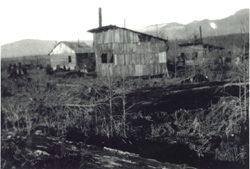
|
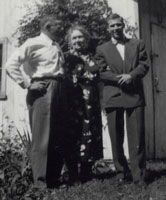
by Lee Ware |
Obituary, John J. Boyd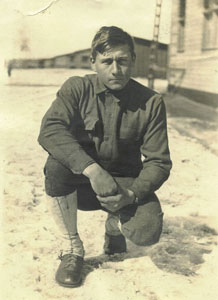 John J. Boyd, 59, of 37 Lathrop Ave, a veteran of the First World War, was taken ill while working at the Kellogg Co., and died shortly afterwards at 9:45 a.m. Saturday in a local hospital. Mr. Boyd had been a Kellogg employee since 1919. He was born in Big Lake, WA Jan 9, 1891, a son of Louis [sic] and Clara Boyd, and came to Battle Creek in 1919, less than a year after his discharge from the Army. He was married to Maggie M. Simons here on June 14, 1919.
John J. Boyd, 59, of 37 Lathrop Ave, a veteran of the First World War, was taken ill while working at the Kellogg Co., and died shortly afterwards at 9:45 a.m. Saturday in a local hospital. Mr. Boyd had been a Kellogg employee since 1919. He was born in Big Lake, WA Jan 9, 1891, a son of Louis [sic] and Clara Boyd, and came to Battle Creek in 1919, less than a year after his discharge from the Army. He was married to Maggie M. Simons here on June 14, 1919.He enlisted in the army in April, 1911, and saw service on the Mexican border before World War I, in which he served as a second lieutenant in the infantry. Mr. Boyd was active in the Maple Methodist church, serving on the church's official board. He also worked with the Boy Scout troop sponsored by the church. Mr. Boyd is survived by his wife; a son, Lewis W. Boyd of 169 Redner Ave; eight sisters, Mrs. Grace Pape and Mrs. Mabel Steen of Concrete, WA; Mrs. Nellie Gilda of Bellingham, WA; Mrs. Margaret Conlin of Puyallup, WA; Mrs. Gertrude Jackman of Seattle, WA; Mrs John Johnson of Albuquerque, NM; Mrs. Georgian Knighten of Portland, OR, and Mrs Annie Hoyt, living in Wash. state; and three brothers, Archie Boyd of Seattle, WA; Norman Boyd of Rosburg, WA, and James Boyd of Portland, OR. |
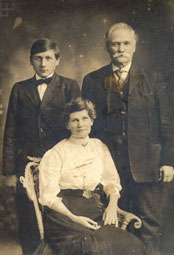 The family story says that John left home for the Southwest, apparently in his late teens. First, he became a cowboy, and then he joined the Army, according to his son, Lewis. As a cowboy, he rode horses and possibly used a gunĖ good preparation to serve in the U.S. cavalry!
The family story says that John left home for the Southwest, apparently in his late teens. First, he became a cowboy, and then he joined the Army, according to his son, Lewis. As a cowboy, he rode horses and possibly used a gunĖ good preparation to serve in the U.S. cavalry!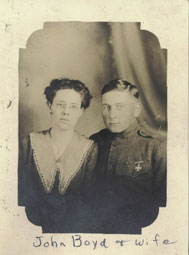 The 85th Division of the National Army was sent to France in July and August, 1918. Parts of the 85th went to Siberia, and the rest of the 85th became the Fourth Depot Division. Depot divisions were used for supply, engineering, communications, etc. and not combat. There is no evidence that John Boyd went with them to France. Instead, he was transferred and promoted to 2nd Lt. in Camp Hancock, in Augusta, Georgia, June 17, 1918. John was honorably discharged September 15, 1918 as 1st Sgt., Machine Gun 2nd Company, Central Machine Officersí Training School. He was discharged as a non-commissioned officer in order to accept a commission as 2nd Lt. Infantry U.S.A. 10 Hence, John became an Army commissioned officer. He then assisted in training new gunners there. 11 Machine gunners were in high demand then, as they suffered a high mortality rate in the War.
The 85th Division of the National Army was sent to France in July and August, 1918. Parts of the 85th went to Siberia, and the rest of the 85th became the Fourth Depot Division. Depot divisions were used for supply, engineering, communications, etc. and not combat. There is no evidence that John Boyd went with them to France. Instead, he was transferred and promoted to 2nd Lt. in Camp Hancock, in Augusta, Georgia, June 17, 1918. John was honorably discharged September 15, 1918 as 1st Sgt., Machine Gun 2nd Company, Central Machine Officersí Training School. He was discharged as a non-commissioned officer in order to accept a commission as 2nd Lt. Infantry U.S.A. 10 Hence, John became an Army commissioned officer. He then assisted in training new gunners there. 11 Machine gunners were in high demand then, as they suffered a high mortality rate in the War.
